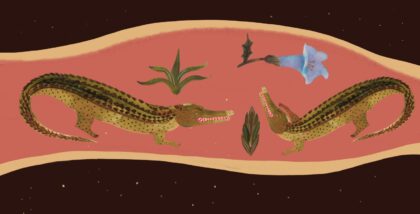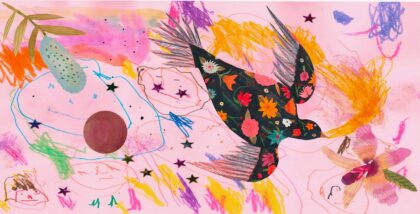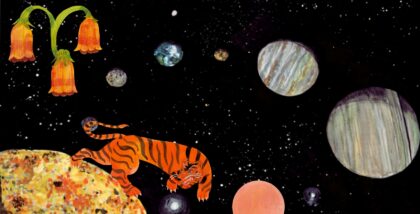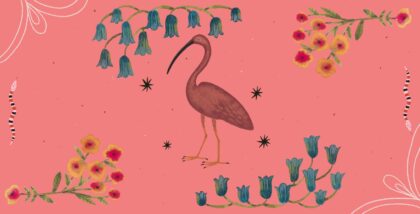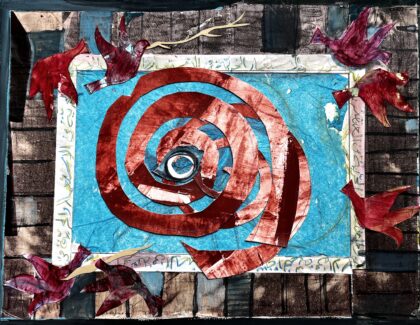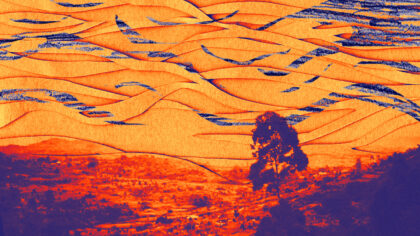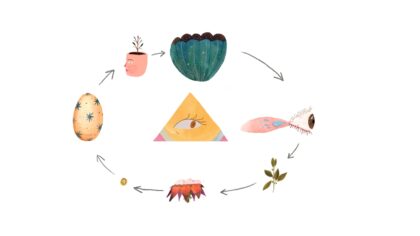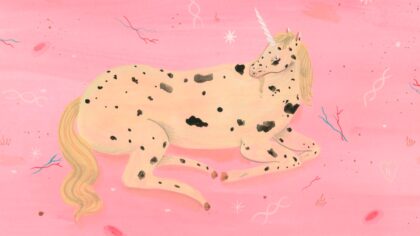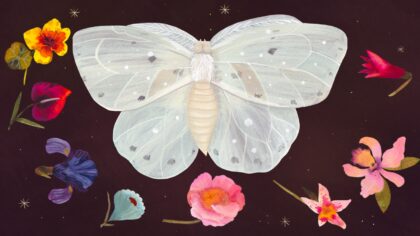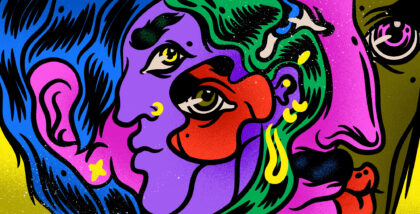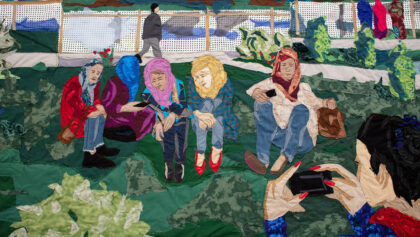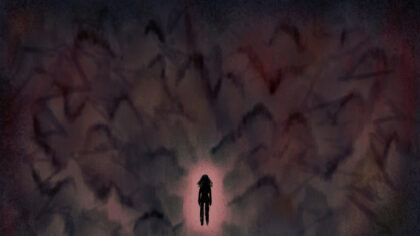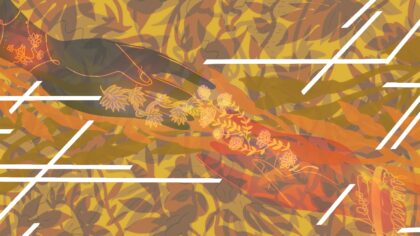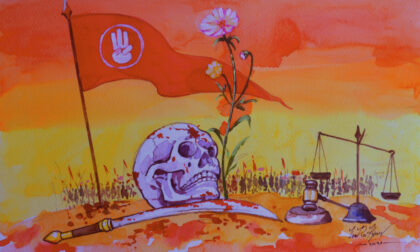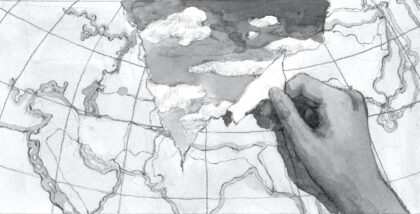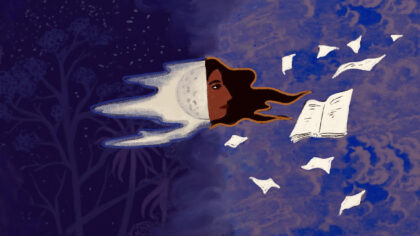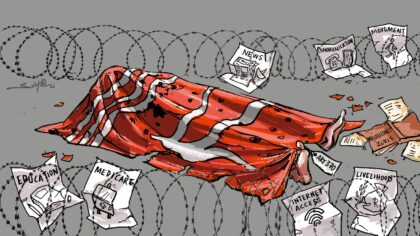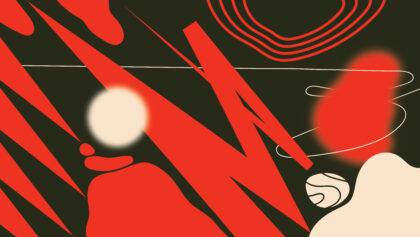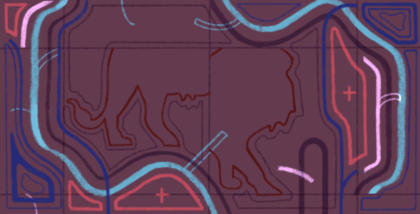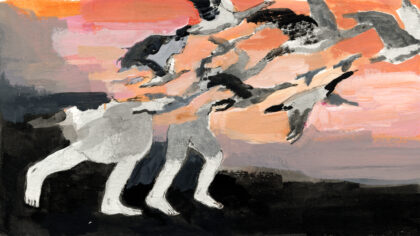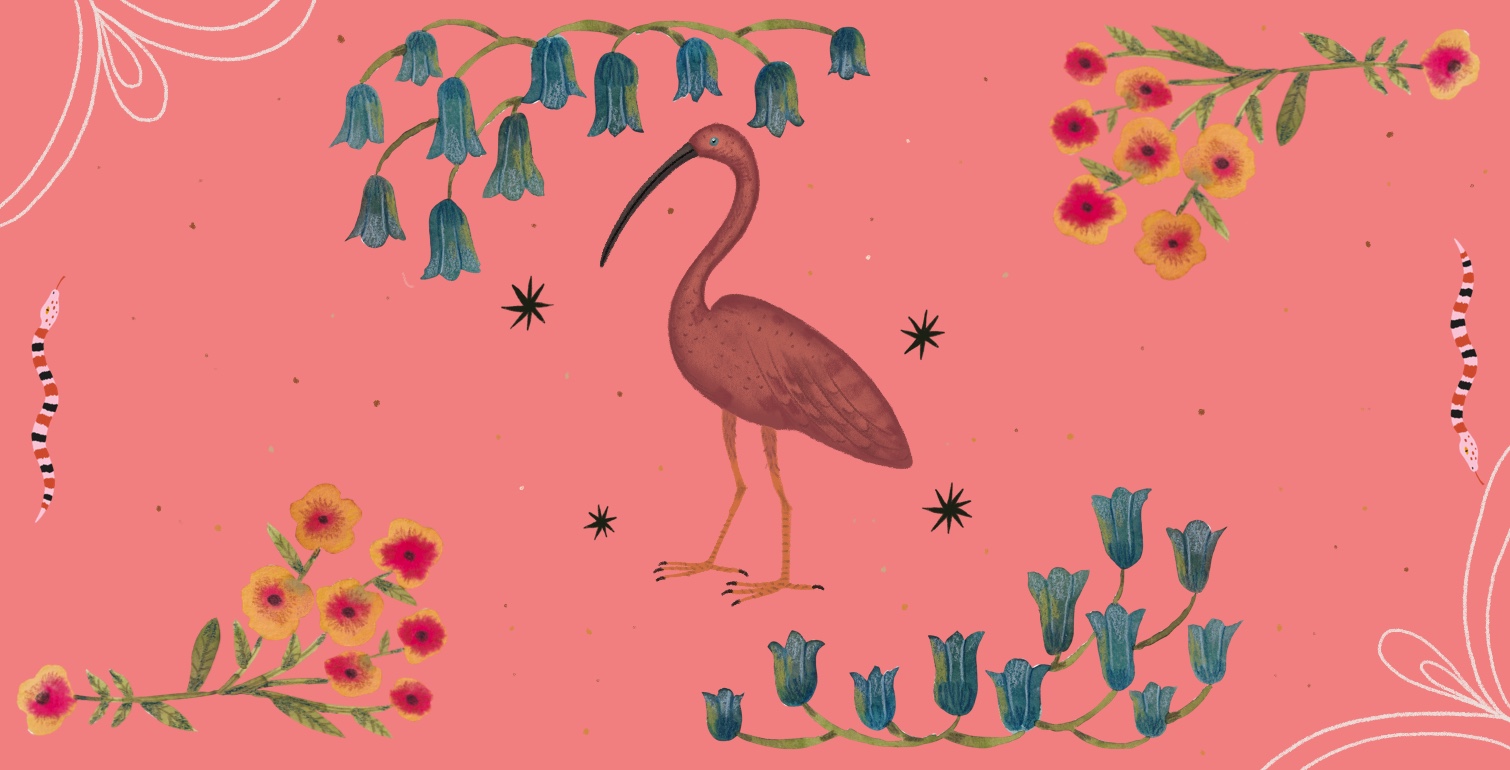
It has been a grim few years in Tunisia, where my father grew up and many of my relatives still live. President Kais Saied, our new leader, rules as an autocrat. In 2021, a decade after our Revolution, he suspended the parliament and organized a sham constitutional referendum to consolidate his executive powers. It was a coup that faraway analysts described as “soft” but has brought back a hard dictatorship. The opposition, the media, lawyers, and judges have been harassed and intimidated. Jails have re-opened their doors to political prisoners. And the people — well, they look elsewhere. To the sea, mostly, since there aren’t enough visas to fly away from our unraveling country.
The sea here has changed. Death upon death means that for us — me, my family, and friends — Tunisia is no longer the place where we used to have fun during our summer vacations. In recent years, Tunisia has become a main point of departure for migrants and asylum-seekers, a place from which one flees the African continent. The International Organization for Migration calls this central Mediterranean migration route, “the deadliest known migration route in the world,” and it attracts Tunisians and foreigners alike. I read in surveys that half of Tunisians want to emigrate, twice more than a decade ago when we had hoped to build a better future here at home. Nearly two-thirds of young Tunisians aged 18-29 are ready to leave their country behind. Forty-one percent of those expressing their wish to emigrate are willing to do so undocumented, which means that we will see more death boats, a chilling prospect.
In the first four months of 2023, Tunisian coast guard patrols stopped 17,000 people at sea who were attempting to cross over to Europe, 14,000 more people than during the same period of the previous year. And that was before summer, the high season of dangerous sea crossings.
Why would they stay in Tunisia where no one wants them anyway, the asylum-seekers say.
Asylum-seekers in rafts are intercepted in Tunisian waters by European-funded patrol boats at least twice as large. The men, women, and children crammed into these rafts, coming from as far as Côte d’Ivoire, wonder when, not if, they will capsize from the patrols’ sea-rodeos. When the coast guard boats approach, they often ram into these fragile vessels; the coast guard sailors shout at the asylum-seekers, and hit them with sticks like undisciplined cattle. At night, the patrols shine strong flashlights at the migrants, blinding them as they latch on to their possessions, as their babies scream. They plead with the coast guard to let them go. Why would they stay in Tunisia where no one wants them anyway, the asylum-seekers say.
That’s for those who are caught alive. Many die, their bodies floating in the sea; countless more are never found. In the last two weeks of April 2023, over 200 bodies washed up on the Tunisian coast. Authorities warn that the morgue in the coastal city of Sfax has reached saturation. Last year, overwhelmed officials hastily buried corpses in another coastal city, Zarzis, leaving many people outraged since they hadn’t informed the individuals’ families ahead of time. On the outskirts of that same town, Algerian artist Rachid Koraïchi bought a tract of land to create a non-denominational cemetery for unclaimed bodies and would also serve as a memorial. His Garden of Africa, which formally opened in 2021, will certainly reach capacity soon.
Tunisian authorities don’t publish official statistics on crossings. Like a lot of other public matters, such as the country’s economic future, they prefer to keep it under wraps, blaming others instead. Black migrants are a key target; in a recent racist and xenophobic statement the president accused them of transforming the sociocultural make-up of the country. Tunisian families are also accused of sadistically encouraging the deaths of their children. In Tunisia, we are caught in a death-cult, a web of endless pain.
We measure these tragedies through hearsay and accident records.
I often think about the shipwrecks; it’s hard not to. I imagine the passengers’ dread, distress, hunger, impatience, and their last breaths, as they visit the forgotten depths of Atlantis. Locally, we know these one-way voyages as harga which means burning, a term derived from the official papers that asylum-seekers destroy before embarking on their crossings, or the expression used when something is skipped, like a traffic light, or a travel visa. We measure these tragedies through hearsay and accident records. In doing so, lives are reduced to numbers and statistics. If we just count them, how do we mourn their loss?
Before humans could read and write, they read the sky for signs. What they found there were birds of all shapes, colors, and sizes. Birds were augurs of luck, misfortune, death, danger, and the promised land. Many religious traditions teach us how to cope with loss through the notion of a hypothetical return — if not in this life, then in another. We endure the desolation of winter, dry months, and dusk by knowing that summer, the rainy season, and dawn will soon be on their way. This is why we search for cycles and signs — as explanations of our world.
The northern bald ibis has been such a sign for people across Europe, Northern Africa, and Western Asia for thousands of years. Its scientific name, Geronticus eremita, means old hermit, a visual characteristic that becomes evident once you see its bare, bald face covered with featherless red skin, the same itchy sort of skin I get when I have bouts of eczema. And yet, the most distinctive physical aspect of the bird is its scythe-shaped, five-inch-long beak that evokes the Black Death masks that European doctors wore to treat the bubonic plague. While at first glance the bird resembles an incarnation of death, it is an ancient, powerful symbol of life.
The ibis is also used in hieroglyphics to symbolize akh, which is a deceased human’s soul that has accomplished worthy deeds and survives the afterlife.
In ancient times, the bird nested in limestone cliffs on the Nile River’s western bank, a geographical location that the Egyptian religion associated with eternity. In representations of their mythology, the messenger-god Thoth has a human body with an ibis head. Thoth embraces several qualities: he is a guardian of knowledge, a protector of scribes, a governor of the seasons and the celestial order, a secretary of gods, and the divine judge of souls in the afterworld. The ibis is also used in hieroglyphics to symbolize akh, which is a deceased human’s soul that has accomplished worthy deeds and survives the afterlife.
Thoth gave his name to the first month of the ancient Egyptian and Coptic calendars – “Thout” — which traditionally announced the seasonal flooding of the Nile River and augured a renewed period of fecundity. Later Greeks, Christians, and Muslims would recognize the late antique and early medieval figure of Thoth as a teacher of deep knowledge and mysteries, particularly because the ibis-headed god was an alchemical patron for those seeking the philosopher’s stone.
The bird also functioned as a guide in many traditions. In Bireçik, an ancient Anatolian town along the Euphrates, local people believed that a northern bald ibis had guided Noah and his ark to safety. The ibis resurfaced in Islamic calendars as a guide for worshippers headed to the hajj, the yearly pilgrimage to Mecca. The bird flew over eastern shores of the Red Sea during its seasonal migration to winter in the highlands of Ethiopia. During this voyage, it passed the holy cities of Mecca and Medina. When it returned from its wintering grounds, the bird was greeted with celebrations, like the ancient festivities that welcomed the Nile River’s floods.
I first encountered the bird online a few years ago, in the mid-career survey of Syrian-Armenian conceptual artist Hrair Sarkissian. As I looked at a photo of his installation Final Flight (2018-2019), I felt an instant connection to the resin ibis’ skulls and the satellite-tag of the bird’s seasonal migration from Syria to Ethiopia. The northern bald ibis is a striking, polychromatic animal. Its plumage mixes black, iridescent blue, purple, and green. This gradient of eerily hypnotic colors reminds me both of an oil slick and the galaxy — a catastrophe and the universe. The bird survives where no one wants to live — arid, rocky habitats and hostile places that its body, the size of a small turkey with short legs, can explore unencumbered by humans.
For him, and for me, the bird has become a meditation on the meaning and the fragility of home.
“By conservative estimates,” Sarkissian said in an interview, “400,000 people have been killed while millions of Syrians have abandoned their homes, seeking shelter and peace across borders through treacherous crossings over border or land.” He added, “The story of the northern bald ibis could be their story.” Sarkissian has used the images of the northern bald ibis to sketch a biological portrait of loss. For him, and for me, the bird has become a meditation on the meaning and the fragility of home.
In the wild, the northern bald ibis has slowly disappeared from much of the vast area it once populated. The Little Ice Age (from the 14th to the 19th century) likely led to its decline in Europe, though the species survived south and east of the Mediterranean Sea. In the late 19th century, European scientists identified two main colonies of the northern bald ibis, one in Morocco to the west, and the other in Turkey to the east. Since the 1960s, the eastern colony has steadily collapsed from the several thousand-strong recorded in the 1930s, their breeding affected by pesticides and other chemicals. Today, the birds are kept in semi-captive conditions. In the Souss-Massa National Park in Morocco, in the mid-1990s, a mysterious disease decimated the more sedentary western colony. There has been a recent uptick in their numbers, however, with scientists discovering another breeding site along the Atlantic coast.
For a while, people assumed that the eastern population of northern bald ibises had simply disappeared. Even the International Union for Conservation of Nature (IUCN), an international body that records the status of our biodiversity, listed the bird’s presence there as regionally extinct in the wild. But people continued to report sightings of the birds in parts of Western Asia, including in Syria. This led to further research during the early 2000s that culminated in local Bedouins and an Italian ornithologist finding a seven-bird colony in the Syrian desert city of Palmyra.
Leaving one’s home is an unspoken grammar of hardship.
Conservationists tried to preserve the Palmyra colony — even naming one of the adult aged-birds Zenobia, after the ancient queen who resisted the Roman Empire in the 3rd century — but the group shrank. Three birds, including Zenobia, were seen wintering in Ethiopia in 2013 and 2014. Yet, only Zenobia returned to Palmyra in 2014. She has not been seen since 2015, the year that ISIS militants took control of the city.
Even though the sedentary western population of northern bald ibises still exists in the wild, I am haunted by their disappearance from Syria. As migratory species, the Syrian birds might have been direct descendants of the ancient Egyptian ibises.
I am not Syrian, but the loss of Zenobia, the only adult-bird that knew the ancestral migratory route of the ibises, stirred a feeling of emptiness and mourning in me. She might never return home, and her final departure changes how we might consider traditional seasons and cycles. She flies away, across, out, in a single-direction journey. A one-way ticket out of a region in which people’s longing for freedom has been betrayed. The bird’s latest disappearance makes me wonder if some forms of escape and survival can only be wordless. Leaving one’s home is an unspoken grammar of hardship. I can’t stop thinking about Zenobia; I hope she survived.
During my last visit to Tunisia earlier this year, I strolled the beach where I once swam as a child. It had changed and was not as I remembered, so I searched for familiar memories. I heard the echoes of my laughing cousins, my father, my uncles, the clinging of gazooz glass bottles from the evenings we spent there sitting on plastic chairs. The sea, quiet. In the morning, fishermen dragged their boats out, returning in the early afternoon. A few city lights twinkling in the distance, marking Tunis’s northern banlieue, the touristic and bourgeois towns of Sidi Bou Saïd and La Marsa. To the left of Sidi Bou Saïd, the port of La Goulette, with its loads of Tunisian emigrants returning home for the summer holidays, along with cars, fridges, and all sorts of objects crammed into the regular ferries from France and Italy.
But what I saw was not the past. I saw the present unfolding on the beach — a site of neglect, sadness, and dirt. Its decrepit state matched the county’s decay and unraveling. Amid broken jars, whiskey bottles, plastic bags, broken toys, and more trash, the beach was littered with people’s abandoned possessions, waiting to be washed away.
I remember how my throat hurt from coughing out water, how fear paralyzed me when I stared back at the hungry waves that wanted me that day.
I used to love fish. I don’t eat it anymore when I am in Tunisia. When my aunt comes home after buying a can of tuna that will be tucked in the freezer and emptied over the course of weeks, I take it from her hands. It’s not from here, right, I ask her, searching for a label on the tin box, a reassurance. Here, fish have gradually become impure. I know they probably eat the floating dead bodies of asylum-seekers who are never recovered.
Most of my family has always lived by the sea, whether in Tunisia or in France. Despite or maybe because of this closeness, I was born fearing it. One day, as I swam with my cousins on that same beach in Tunisia, I felt a pull; something forcefully grabbed me. It was a small whirlpool and before I realized what was happening, I was drowning. I screamed, swallowed water, coughed, tried to stay afloat. I don’t know what followed except that someone took me out of the sea, and I never swam again. I relive my helplessness and confusion every time I read the news of harga deaths. I remember how my throat hurt from coughing out water, how fear paralyzed me when I stared back at the hungry waves that wanted me that day.
I often think about stories from the ancient Egyptian Book of the Dead, which gathers the spells required for the dead to safely reach heaven. They first had to have their hearts weighed by Ma’at, the goddess of justice, who would determine their virtue and judge the deeds they committed during their lives. Thoth would record the judgments. The dead would then be invited to cross a lake or a river. For this, they needed to charm a reluctant ferryman as a final test. The ferryman would then take the souls on a journey to the Field of Reeds, where the dead would encounter a grandiose underworld of plenty — lands irrigated by canals, large fruits and vegetables, and, crucially, loved ones. A migrant’s dream, in a way, full of the hope that everything they left behind would eventually return.
Amid all the deaths today, I imagine the Mediterranean Sea as a gateway to a new Field of Reeds. Coordinates, whether we pursue or surrender to them, regulate our lives — where we pray, love, and survive. Zenobia the ibis, breathing the cool air of the Ethiopian highlands, is one set of coordinates; and there is another one, somewhere along the Tunisian coast where people have squeezed onto a boat with their minds set on the north.
